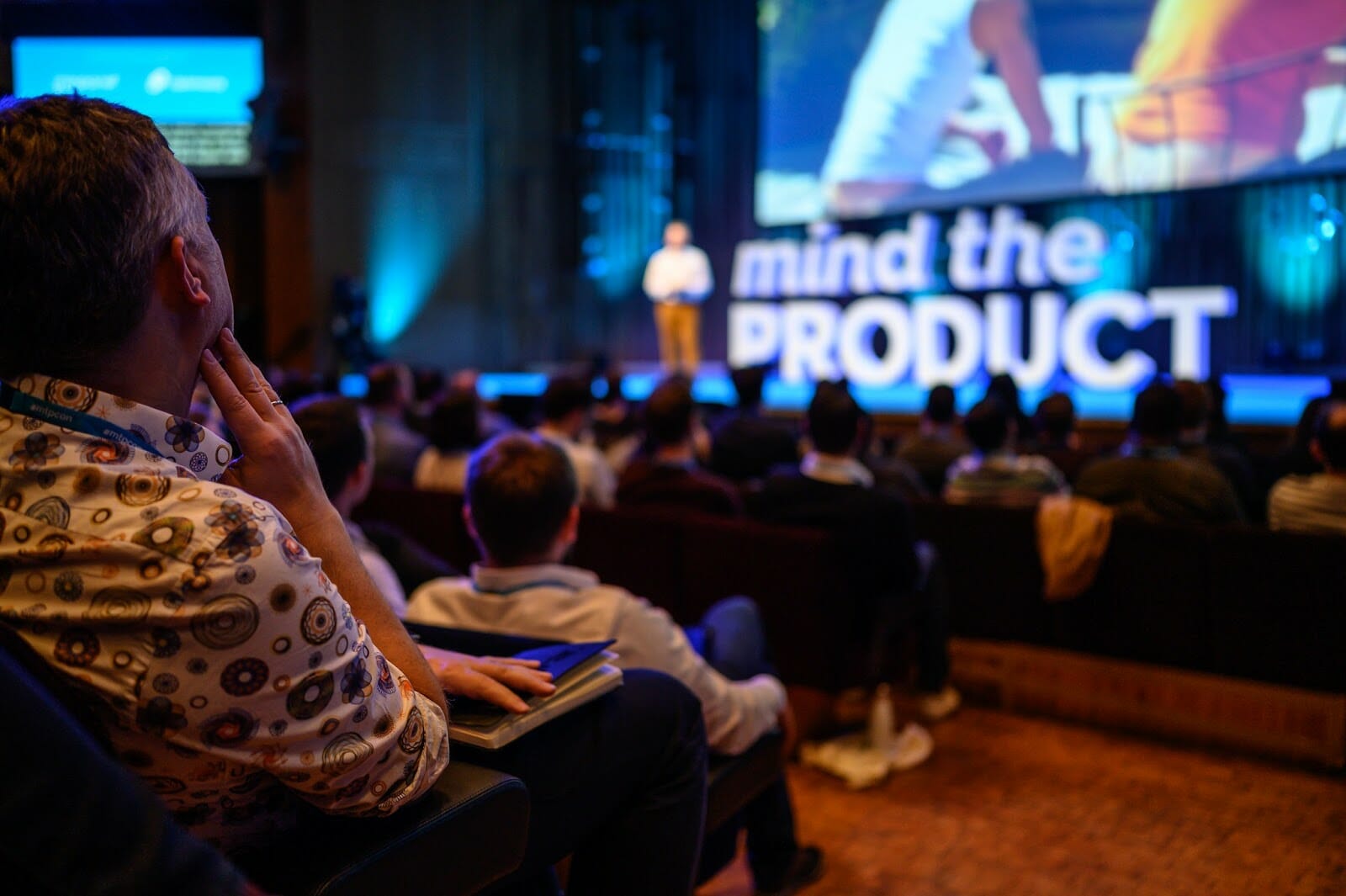How Design Thinking, Lean, and Agile Work Together by Jonny Schneider [Mind the Product]

In this keynote from #mtpcon London, Jonny Schneider, Product Strategy and Design Principal at ThoughtWorks, discusses how using all of design thinking, agile, and lean means we can build better products.
Key points:
- You should try to use design thinking, agile and lean when building your products
- Testing and learning with real people, using real software in real contexts, is the key to competitive advantage
- You can design the right experiments by asking the right questions
- Measure things that contribute to decisions and solve for next order problems

Jonny begins his talk by explaining that design thinking is a mindset rather than a process – he quotes Carissa Carter, Director of Teaching and Learning at the Stanford d.school who says design is an ability which includes empathetic learning, the ability to navigate ambiguity, fast experimentation, and the ability to craft things intentionally – the process just helps us to get started.
Lean, he continues, optimises systems of work. It empowers people, valuing outcomes over outputs, among other tactics. While it can be powerful, we often miss that it’s also about exploring uncertainty through doing.
Agile optimises software delivery – the most powerful part of this framework is that it values responding to change over following a plan.
- Design thinking – explores the problem
- Lean – helps us to build the right things
- Agile – helps us to build the thing right

Many think that these frameworks don’t work together. But they do and you should try to use all of them when building your products. For example:
- Lean and design thinking – work out where we are now
- Agile and lean – where strategy meets execution
- Design thinking and agile – a collaboration around realistic solutions
So how can we bring all of these different ways of working together in our teams?
1. Continuous Learning is the new Competitive Advantage
We live in an increasingly complex and fast-moving world where the cost of creating software has reduced significantly. This means that uncertainty has increased at the same rate.
Ten years ago we used customer experience research in labs to create competitive advantage. Now, given that costs are lower, it’s better to test and learn with real people, using real software in real contexts. This pace of learning is what sets successful teams apart from others. Organisations that can continuously learn and release in short cycles outperform their peers.
2. Design the Right Experiments to Learn the Right Things
This sounds easy, but in reality it is very difficult. In theory, you simply decide on your hypothesis, work out how to test it, and set your success criteria. However most teams let assumptions creep into the hypothesis they’re testing. For example, just because you design an effective customer acquisition tool, doesn’t mean that people will want to use your product.
Start by asking questions about what type of learning you want to obtain. These questions can include (but aren’t limited to):
- Are you trying to understand a problem?
- Do you want to test a solution?
- Is there a market for our product?
From here, you can design the right test for the right question.

There are a huge range of tools that vary depending on the confidence and cost you need. For example, you don’t want to base a full investment decision on the results of a survey, but you might want to use a survey to test feature ideas with users.
3. Measure Only Things That Contribute to Decisions
We all know about vanity metrics and what we shouldn’t be measuring. But what data points can we look at which will help us to make better products?
The answer is – the more specific we get, the better we can measure.
For example “conversion from results page to product detail page, increase by 3% month on month” allows a much better conversation than our “NPS score has gone down”.
4. Solve for Next-Order Problems
Problems have a way of unfolding on you. As soon as you’ve solved something, there’s always a bigger problem to be tackled. As they step further and further away from the sharp end of an organisation, people develop different perspectives.
Our job as product managers is to help people with these different viewpoints to work together. It can be hard, but it is a powerful approach. By co-creating strategies together, it makes things more likely to happen as everyone who’s been involved is automatically brought into the decisions made.
Your role in this is to build the team and environment so that other people can create the solutions.
The post How Design Thinking, Lean, and Agile Work Together by Jonny Schneider appeared first on Mind the Product.
Source: Mind the Product https://www.mindtheproduct.com/how-design-thinking-lean-and-agile-work-together-by-jonny-schneider/

Post a Comment